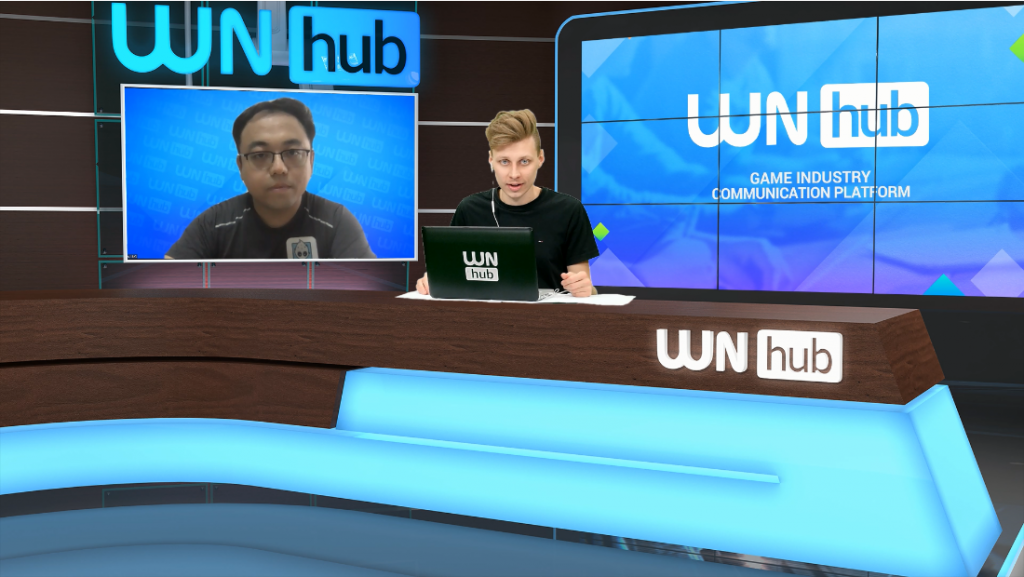Update (5/25): Here is the full talk at the event.
This past month, Cocos joined many developers at the newly created WN Hub, an online conference with the opportunity to chat with those in the game industry all over the world, with over 6,000 attendees coming to the event. We were honored to be a speaker at the event and share some exciting news from the Chinese game industry as well as introduce the next generation of Cocos Creator.

In our talk, “From WeChat Mini-Games to Top Global Hypercasual Apps – Strategies on Game Development.” We had our VP Cynthia Du, and our Technical Director, Huabin Ling (aka Panda), share their presentation and took questions from the online audience.
Cynthia Du introduced the talk sharing that mini-games in China have become a huge trend. One reason is the ISBN issues that have been put in place in the past few years. (We talked about that in a previous article.) So many developers have built WeChat games that have the opportunity to go viral in the WeChat moments and shares.
76% of games on WeChat are Casual or Hypercasual. Only 37% of WeChat gamers are active gamers who play games all the time. This means a lot of WeChat players are inactive or non-gamers who only are playing games only on WeChat. The great data continues with the D1 retention rate at 60%, D7 at 54%, and D30 at 43%. 21 games are currently making 1.5M$ a month with ads with 16 games with in-app purchases making over 1.5M$.

The use of HTML5 is becoming prevalent in China, and it’s a big part of WeChat. WeChat uses a Runtime Architecture that allows you to call for native API requests as well as use HTML5 for their games. So many of the games act like native games because they have more stuff than a regular HTML5 game.
We know all of this because we helped build this infrastructure for WeChat, and we are now sharing this functionality with Cocos Play. It’s an SDK that allows app developers and vendors to have their runtime architecture placed inside their app.
This allows native apps that let their users play games from that app. We also are working with mobile vendors with their mini-game apps.

Cynthia went on to say we’re seeing a growth in our use of Cocos Creator, and developers are building more games for the WeChat service for other reasons. This is because they can see the interest in using WeChat as a testing platform before having the game move to more platforms (native, H5, other mini-game platforms). They can see how things are working in WeChat to see needs fine-tuning and can then start building the native versions of their successful games for China and abroad.
Moving to the pandemic and how it affected China’s mobile gaming sector, we saw a significant increase in user base playing games during that period. Revenue also increased, but after time, IAP and ad revenue started to shrink. Advertisers are not increasing their budgets during this time, with some companies going out of business.
So we assume the budgets will continue to stay steady or lower, and advertisement revenues will drop by 10 – 15%. Players are still paying for in-app purchases, but are waiting for more discounts before paying up, usually on the weekends when they occurred. So make sure to be careful of your budgets for the next few months.
Cynthia passed the talk to Panda as he introduced the future release of Cocos Creator 3.0 and some of the advantages that are available for the platform. These include a cross-platform advantage with native and instant games, ease of entry, and great performance.
In Cocos Creator 3.0, we improved our material editor with quick access to the effects in the node inspector and instant feedback from the scene view window. Panda also showed off our quick search tool for materials, allowing for better discovery of your assets.
We also improved the lighting and particle systems with photometric lighting and PBR and IBL mapping, to name a few. The particle system allows you to set up your particles and edit them to whatever you would like.

This is added to our already great features like our Animation Editor for any visual node, an excellent UI system that includes mixed 2D & 3D support, multi-camera ordering, and physics colliders. Our physics have improved with mesh colliding and the ability to switch the backend physics at any time in the game.
Finally, Panda talked a bit about the improvements in rendering with the use of WebGL, OpenGL ES, and Metal, with Vulkan and WebGPU in the future. Panda also shared how we have improved older renderers with improved APIs so they can get better improvement in the buffers.
Those interested in looking more into this can check out our presentation.
Cocos Creator 3.0 will be available in the summer and hope you try out the new features once it arrives. You can already see some of them in our latest blog post about Tencent’s latest game.








